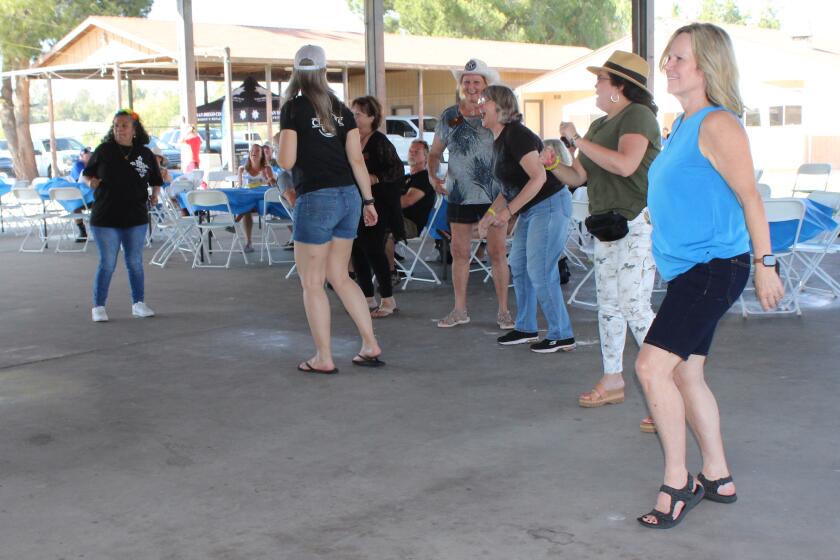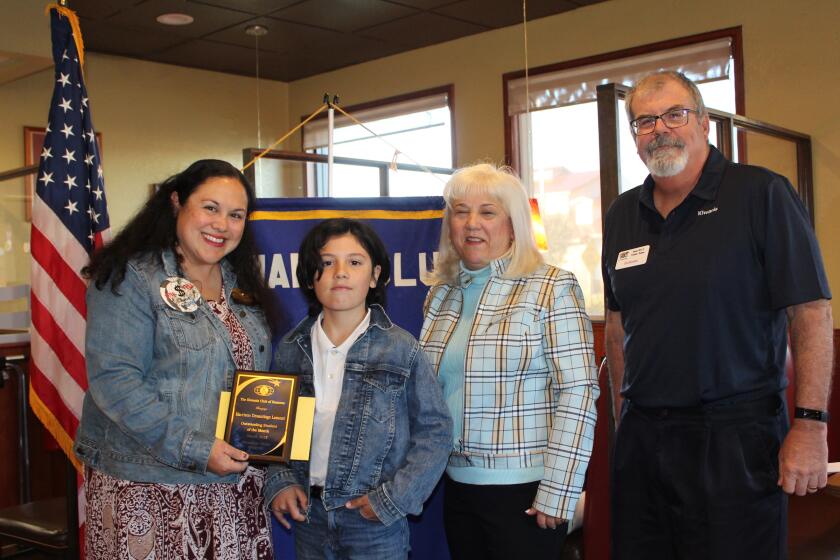Voters to decide on another sales tax hike
San Diego Association of Governments is asking voters for another sales tax increase.
The board of the regional agency recently approved putting a bid for a 40-year countywide half-cent sales tax on the Nov. 8 ballot. If approved, it would be in effect from April 1, 2017, until 2057 and would overlap with the TransNet half-cent sales tax that will expire in 2048. The money would pay for freeway projects, road repairs, trolley lines, open space management and observing state water quality mandates, Phil Trom, senior regional planner for SANDAG, told Ramona Community Planning Group members during their July meeting.
If the measure passes, the widening of state Route 67 to four lanes between Dye Road in Ramona and Mapleview Street in Lakeside would move into the Priority Corridors Program and occur before 2050 as currently projected, Trom said. SANDAG has put a 15-year timeline on the Priority Corridors projects, and each is considered first priority, Trom said.
“I think that’s a big win for Ramona,” said Trom.
According to a statement from SANDAG, the measure would “use its best efforts to complete projects in the Priority Corridors Program within 15 years.”
“As the money comes in, you spend it,” said Trom. “That Purple Line (Trolley) project is going to take 15 full years to do, but perhaps these other projects can come in earlier.”
In 1987, voters approved a 20-year TransNet half-cent tax for transportation projects. In 2004, voters approved a 40-year extension of the tax for highway, transit and local road projects. That tax will expire in 2048.
The Nov. 8 ballot measure “is needed to keep pace with the growing needs of a growing population and to build on the successes that we’ve had with the TransNet with the half cent sales tax program that’s been in existence since 1987,” said Trom.
The county’s population will grow 30 percent by 2050, meaning there will be over 1 million additional people living in the region, over 460,000 additional jobs and at least 325,000 additional housing units, he said.
SANDAG calculates that this growth causes a funding gap of approximately $18 billion.
“This funding measure is meant to bridge that gap,” Trom said.
To find ways to use taxpayer dollars effectively, SANDAG used census data to track where citizens live and travel, he said.
In Ramona’s subregion, 69 percent of people go outside the subregion for work while 31 percent stay within the boundaries. Seventy-three percent of work trips monitored were from people leaving Ramona for work.
“What that means is we have a whole lot of transportation projects that are necessary, not just within the subregion but to really support the whole system,” said Trom.
When looking at employment, Trom said that residents fill 46 percent of the jobs within East County, while people living outside the area fill 54 percent.
“We look at both sides -- people that live within the subregion, also where those jobs are, and how people are coming in and actually utilizing those jobs,” he said. “We think really, really carefully about that.”
Using information gathered, SANDAG developed its most recent regional transportation plan for the county. The plan goes until 2050, and includes $204 billion of transportation projects.
According to Trom, these transportation projects provide more mobility choices for people and preserve more than half of the land as permanent open space.
“So when we look at TransNet, the current sales tax measure they have, it’s that sales tax that you pay every day, we built quite a number of projects with that money, accruing dollars since ’87,” Trom said. “Going back to ’87, when this type of analysis was done, we found ourselves in a very similar situation: Growing population, needing more projects, and needing some way to bridge that gap.”
For every dollar the county sales tax raises, the state and federal government gives at least $3, said Trom, allowing SANDAG to compete with other agencies for state and federal money.
“We’ve been very competitive when we put together very good projects,” he said. “So (we) get whole dollars of projects on the 5 cents brought from the community. I think that’s a really interesting success to share.”
Of the $18 billion SANDAG hopes to get from a new tax, 14 percent, or about $2.6 billion, would fund highways, carpool/manages lanes and connectors, and $500 million would go to transportation grants.
Twenty-four percent of the proposed tax, or $4.3 billion, will be spent on local infrastructure projects such as potholes, road repairs and wash/manage pollution runoff.
“That would be apportioned by population, so the county, Ramona, would get a chunk of that,” said Trom.
The expenditure also includes $2 billion for open space. At least 55 percent of the county would be preserved as permanent open space, which is bigger than the size of Delaware, noted Trom.
The proposal also designates $7.5 billion to build and operate public transit, $540 million for active transportation, $900 million to separate trolley/rail tracks from vehicle traffic, and $178 million for arterial traffic light synchronization.
SANDAG’s Independent Taxpayer Oversight Committee that reviews all the expenditures for TransNet would continue, so “there would be oversight, accountability, as we’ve done since 1987,” said Trom.
“This really invests heavily in our future transportation systems, to respond to the population growth really looking at the economic fiscal impacts and I think we get a lot of bang for our buck in the region,” Trom said.
Planning group chair Jim Piva thanked Trom for his time.
“Obviously there’s going to be growth and you guys have done a really good job of it,” he said. “I know that you get complaints, yelled at a lot, but I for one was grateful for the work and the help that you provided us on the (state Route 67/Dye Road/Highland Valley Road) intersection. You were open to our discussion.”




